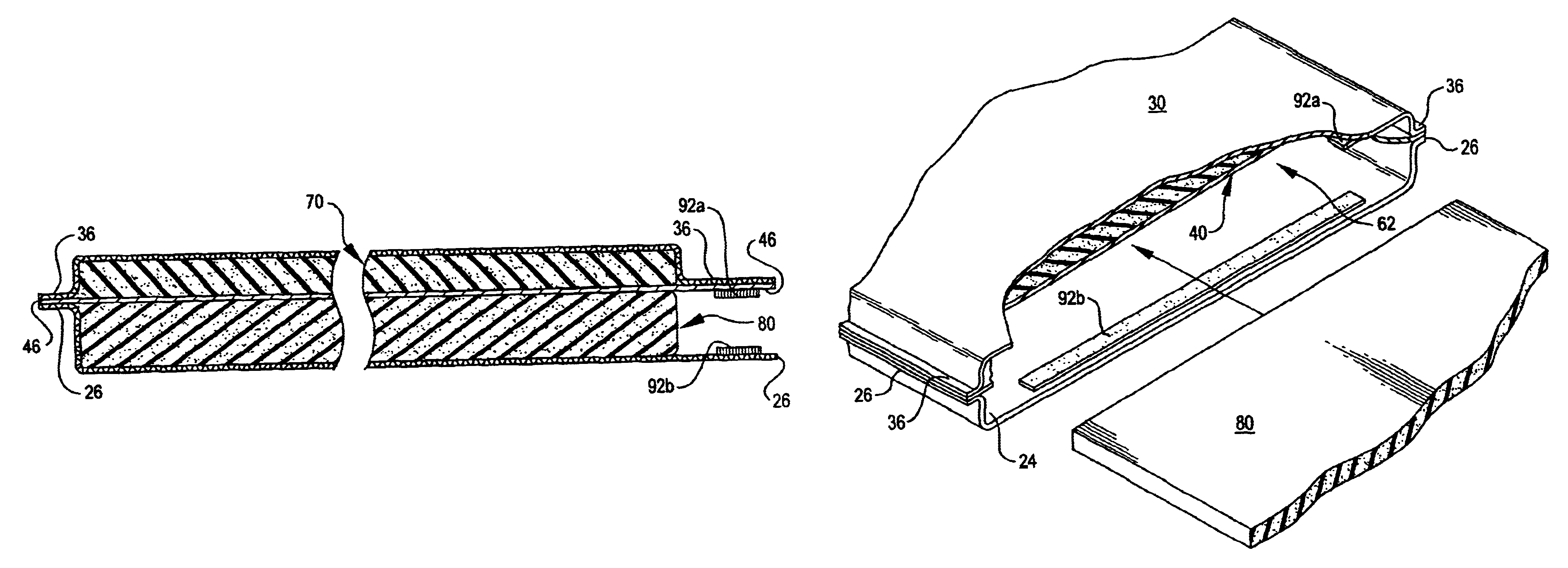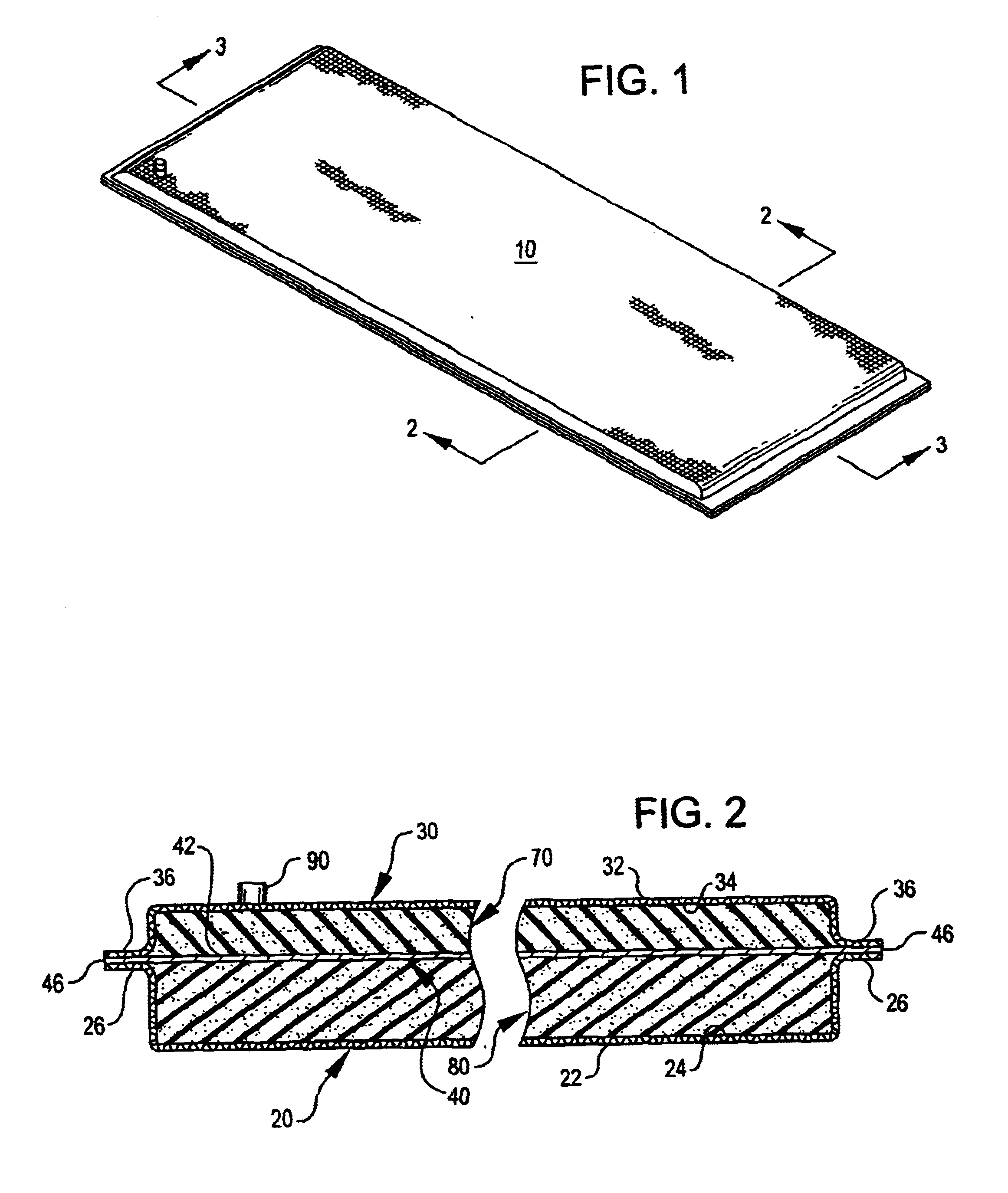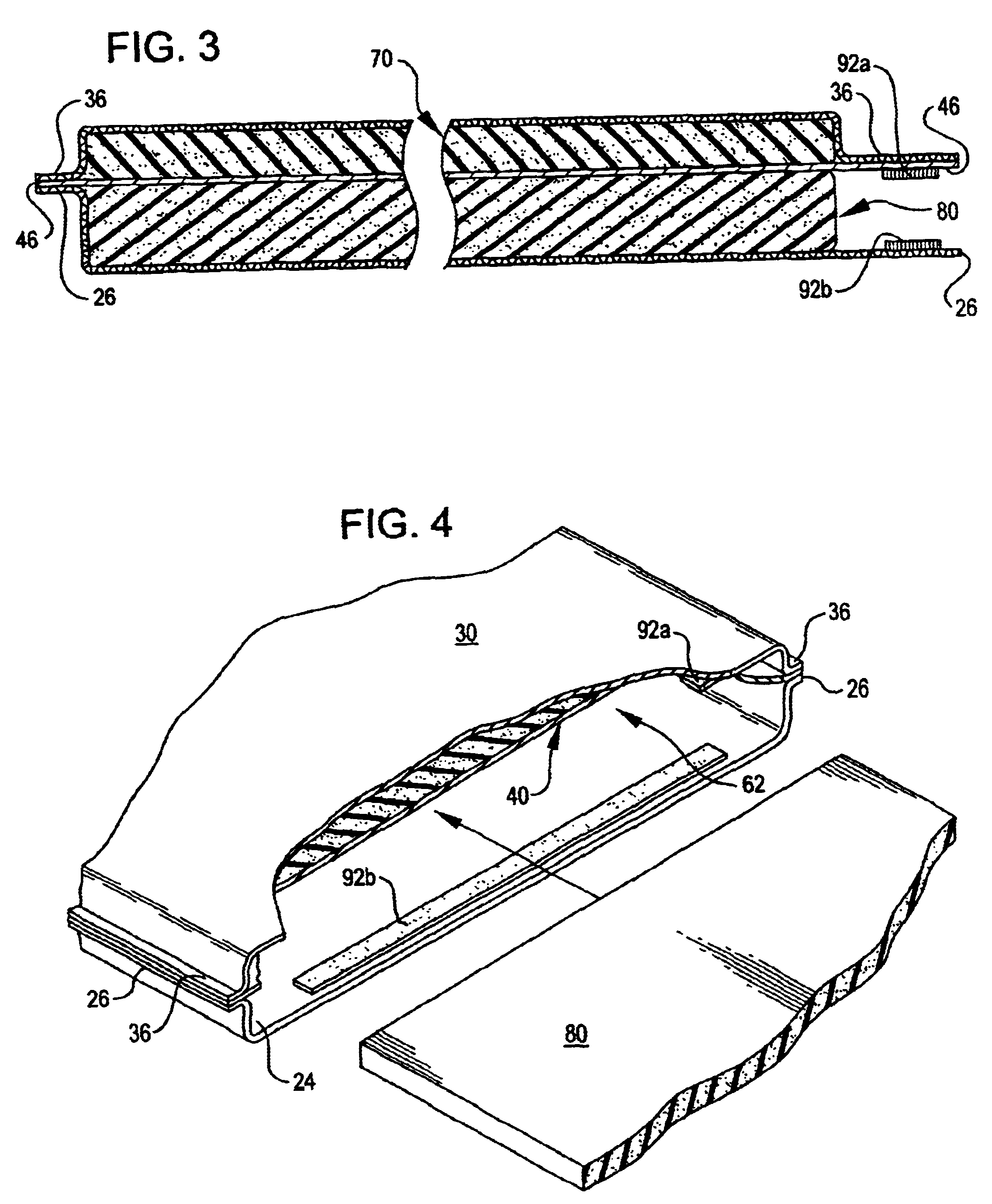Multiple chamber self-inflatable body
a self-inflating, multi-chamber technology, applied in the direction of fluid mattresses, envelopes/bags making machinery, paper/cardboard containers, etc., can solve the problems of pad failure to perform as intended, loss of air in the enclosure, collapse of the enclosure,
- Summary
- Abstract
- Description
- Claims
- Application Information
AI Technical Summary
Benefits of technology
Problems solved by technology
Method used
Image
Examples
Embodiment Construction
Turning then to the several drawings wherein like numerals indicate like parts, and more particularly to FIGS. 1-3 and 5, the general attributes and construction of combination pad 10 are shown. Pad 10 comprises bottom panel 20, top panel 30, and intermediate panel 40, which are selectively attached to one another in order to form two chambers. One chamber is preferably a fluid impervious chamber sealed from the external environment and includes self expanding and maintaining features, while the other chamber is intended to selectively receive a removable resilient member.
Again returning to the referenced figures, bottom panel 20 includes outside surface 22, inside surface 24, and periphery 26. Similarly, top panel 30 includes outside surface 32, inside surface 34, and periphery 36. Finally, intermediate panel 40 includes upper surface 42, lower surface 44, and periphery 46. Shown disposed in first or upper chamber 50 is resilient member 70; shown disposed in second or lower chamber...
PUM
| Property | Measurement | Unit |
|---|---|---|
| flexible | aaaaa | aaaaa |
| resilient | aaaaa | aaaaa |
| thermal reflective | aaaaa | aaaaa |
Abstract
Description
Claims
Application Information
 Login to View More
Login to View More - R&D
- Intellectual Property
- Life Sciences
- Materials
- Tech Scout
- Unparalleled Data Quality
- Higher Quality Content
- 60% Fewer Hallucinations
Browse by: Latest US Patents, China's latest patents, Technical Efficacy Thesaurus, Application Domain, Technology Topic, Popular Technical Reports.
© 2025 PatSnap. All rights reserved.Legal|Privacy policy|Modern Slavery Act Transparency Statement|Sitemap|About US| Contact US: help@patsnap.com



